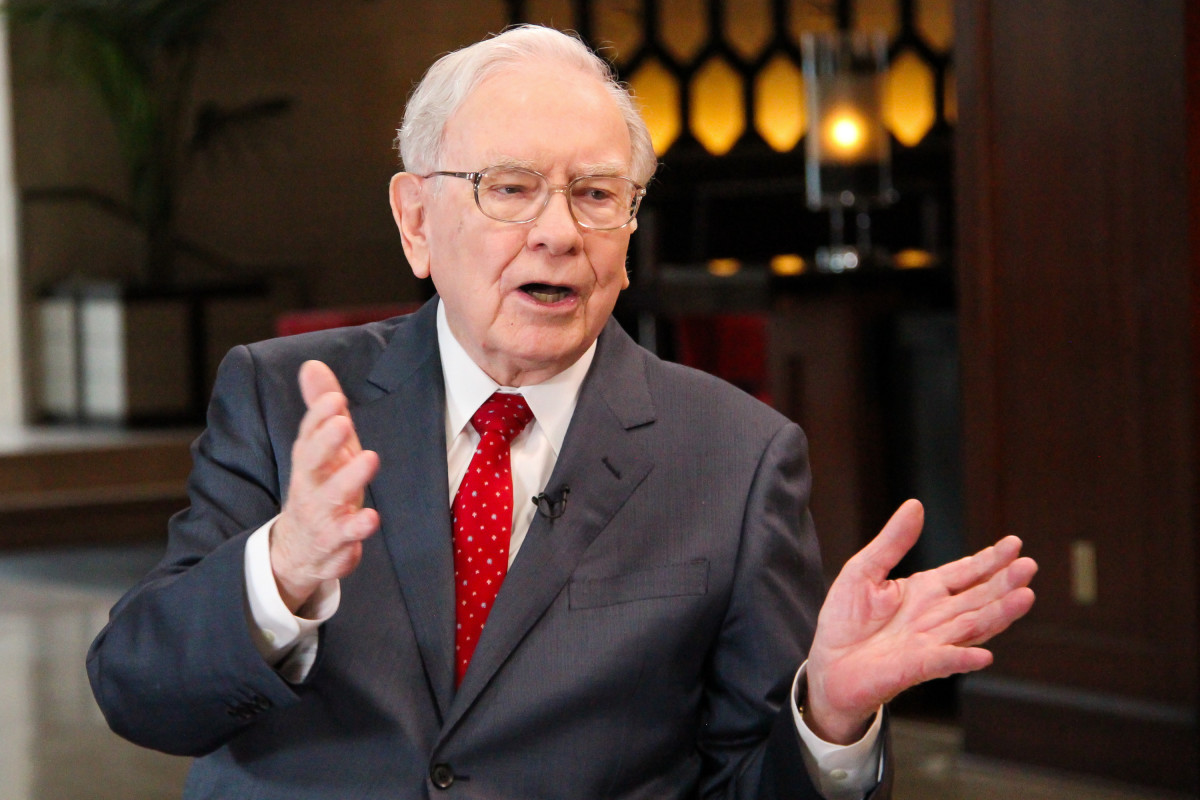
As you’re undoubtedly aware, publicly-traded stocks make up a large portion of super investor Warren Buffett’s Berkshire Hathaway (BRK.B) .
The company owns more than 40 positions with a market value near $300 billion, close to one-third of Berkshire’s $984 billion market capitalization. So, these holdings matter to the company.

Warren Buffett's massive investment portfolio
Berkshire’s realized and unrealized gains on its stock holdings totaled $20 billion in the first half of this year.
Buffett recommends ignoring the unrealized gains/losses, as their impact on Berkshire is uncertain. It posted an unrealized loss of $37.9 billion for the first six months.
Many investors have done quite well mimicking Buffett’s stock picks. Berkshire’s biggest holdings, according to Berkshire Hathaway's second-quarter 13-F report with the Securities and Exchange Commission, include:
- Apple (AAPL) , market value: $84 billion.
- American Express (AXP) , market value: $35 billion.
- Bank of America (BAC) , market value: $32 billion.
- Coca-Cola (KO) , market value: $25 billion.
- Chevron (CVX) , market value: $19 billion.
- Occidental Petroleum (OXY) , market value: $16 billion.
- Kraft Heinz (KHC) , market value: $10 billion.
- Moody’s MCO, market value: $10 billion.
- Insurer Chubb (CB) , market value: $7 billion.
- Japanese trading company Mitsubishi (listed in Japan), market value: $7 billion.
The scuttle on Berkshire’s Occidental Position
Berkshire established its Occidental position in 2019, helping to fund the company’s $38 billion purchase of Anadarko Petroleum.
Buffett has expressed admiration for Occidental’s Chief Executive Vicki Hollub and has spoken highly of the company’s carbon-capture strategies. Berkshire and Occidental formed a joint venture to extract lithium in California.
Related: Top Berkshire Hathaway Exec makes major stock decision
Occidental shares have traded roughly in line with crude oil prices over the past five years. The stock skyrocketed more than eight-fold from October 2020 to November 2022 but has stalled since then.
Shares have slumped 21% in the last six months amid falling oil prices, to $51.30 as of Monday. This has led several Wall Street analysts to lower their Occidental stock price forecast.
Analysts’ update Occidental stock price targets
Morgan Stanley analysts cut their price target to $71 from $74 while keeping their overweight rating.
Sliding oil prices, slowing inflation, and Federal Reserve interest-rate cuts "all present headwinds for performance," the analysts wrote in a commentary on Sept. 16, cited by The Fly.
Related: Warren Buffett buys a beautifully cheap stock
On Sept. 30, both Evercore ISI and Truist reduced their share-price targets. Truist went to $56 from $65, maintaining its hold rating. It cited falling oil prices.
Evercore lowered its target to $63 from $67, affirming its underperform rating. Central banks around the world are cutting interest rates, of course.
And energy commodities and stocks "may well sit out due to challenging fundamentals and a looming 2025 imbalance," Evercore analysts said in a commentary cited by The Fly.
Don’t fight the Fed
To be sure, the analysts said they "wouldn't fight the Fed (or the Politburo).” The Politburo reference could allude to the possibility of Russia cutting oil production. Risks to oil prices are "skewed to the upside,” the analysts said.
Still, the third quarter’s end will likely show a decline in oil price estimates for the near term, Evercore said.
More Warren Buffett:
- Veteran fund manager views Warren Buffett moves as worrisome
- Warren Buffett's Berkshire Hathaway just joined exclusive club
- Analysts reset Ulta stock price targets after Warren Buffett buy
Morningstar analyst Joshua Aguilar moved the other way from those three analysts. On Sept. 3, he raised his fair value estimate for Occidental by 7% to $62.
“We previously did not incorporate the impact from Oxy’s midstream business benefiting from a reduction in crude oil and transportation rates from the Permian to the Gulf Coast,” he said.
“The company expects annualized savings from these rate reductions of $300 million to $400 million, with 40% of savings starting in 2025 and the full savings realized in 2026.”
Related: The 10 best investing books, according to our stock market pros







